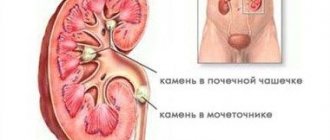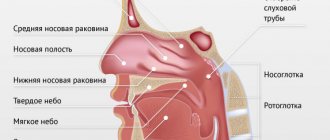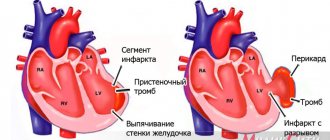Hemoptysis is a frightening condition in which blood is periodically released along with sputum during coughing. In some cases, these are only bloody inclusions, while in others the blood completely stains the sputum. Based on the type and amount of blood impurities, one can roughly guess the source and cause of the bleeding, but delaying a visit to the doctor is unacceptable. In Anapa, the diagnosis and treatment of diseases that cause hemoptysis are dealt with in medicine.
What could be the reasons?
There are many reasons for coughing up blood. For example, traumatic damage to the trachea, pulmonary arteries or bronchi during tracheobronchoscopy. Various lung diseases can also be a source:
- Acute or chronic bronchitis
- Pneumonia
- Lung abscess
- Tuberculosis
- Pulmonary embolism
- Bronchiectasis
- Respiratory cystic fibrosis
- Lung cancer
Complex diagnostic methods
The examination begins with collecting an anamnesis - the doctor examines the patient’s complaints and asks him about the nature and frequency of hemoptysis. Based on these data, the specialist can already determine the area of the probable source of bleeding. For an accurate diagnosis and identification of the provoking disease, a comprehensive diagnosis is carried out.
- Blood tests. The scope of analysis is individual. The doctor may consider it necessary to find out your hemoglobin level and identify or rule out clotting disorders.
- Examination of sputum for the presence of bacteria, fungi, and atypical cells.
- A chest x-ray is always performed, since hemoptysis is most often caused by lung diseases. Fluorography shows tuberculosis, pneumonia, and other pathologies.
- Computed tomography gives a more accurate picture of the condition of the lungs. With its help, benign and malignant tumors and heart conditions are identified.
- Bronchoscopy is an endoscopic method of examining the inside of the trachea and bronchi to identify changes in the respiratory tract, neoplasms, and foreign bodies. This is the most informative method of establishing the cause of hemoptysis. The bronchoscope is inserted through the mouth or nose. If necessary, medical manipulations and surgical procedures are immediately performed.
- Biopsy - taking a sample of sputum or tissue for cytological or histological examination. The biopsy is performed during bronchoscopy. Helps to identify dangerous pathologies in the early stages, even if their signs are not detected on CT.
- ECG for the primary detection of heart disease. If there are suspicions, a more detailed examination is required.
If bleeding is suspected, call an ambulance. If hemoptysis is episodic, contact a diagnostic specialist. Here they will quickly establish a diagnosis and provide effective assistance.
How dangerous is this?
The danger of this condition depends on the cause. If blood in the sputum is present in the form of several “bloody streaks,” then most likely this is simply expectoration of capillaries that have weakened due to illness or excessive physical exertion. If this is the first and only case, there is no danger to health, but you still need to consult a doctor. If these are episodic or systematically recurring attacks with the release of sputum colored in shades of red or brown, this is a reason for immediate consultation with a qualified pulmonologist. A lot often depends on the promptness of diagnosis and initiation of treatment.
Main causes of hemoptysis
Hemoptysis is caused by diseases and neoplasms of the respiratory system, cardiovascular pathologies, gastrointestinal problems, foreign bodies in the respiratory system, and trauma.
Lung diseases lead to hemoptysis if tissue begins to disintegrate and blood vessels are damaged. The reason may be:
- pneumonia – inflammation of the lung tissue;
- bronchiectasis - dilation of the bronchi as a result of a purulent-inflammatory process;
- bronchitis – inflammation of the bronchial mucosa;
- vasculitis, which destroys the walls of blood vessels;
- tuberculosis;
- gangrene;
- bronchial fistulas;
- fungi and parasites;
- congenital malformations;
- chronic obstructive pulmonary disease.
A severe, prolonged cough due to respiratory tract infections can lead to rupture of small blood vessels in the laryngeal mucosa. In such cases there is little blood, it is released in patches. A small amount of bloody discharge is possible with sinusitis and frontal sinusitis.
Tuberculosis is accompanied by mucopurulent sputum with bloody inclusions of a bright red hue, alternating with the discharge of pure blood.
The type of sputum in pneumonia depends on the type:
- In case of croup - a sparse brown or brownish tint.
- With hemorrhagic it is bright red.
- During acute pneumonia, there may be a cough of pure blood or with impurities.
In case of malignant tumors in the lungs, raspberry sputum is coughed up. Hemoptysis is caused by bronchial adenoma, hemangioma, and other neoplasms.
Hemoptysis can be an alarming sign of diseases of the cardiovascular system . With mitral stenosis, blood with scarlet streaks. In the case of atherosclerotic cardiosclerosis, hypertension, myocardial infarction, at the beginning of a cough, scarlet sputum is released, turning into a more saturated bloody one.
Blood comes out with a cough when there is a stomach or duodenal ulcer. In women, hemoptysis may be a consequence of endometriosis - the proliferation of endometrial cells in the respiratory organs.
What should you tell your doctor?
Describe the discharge. How much blood is there in the mucus - is it a few drops, or is there blood with virtually no mucus? Is the blood pinkish and foamy, or is it an almost black clot? Is coughing up blood accompanied by pain in the throat or chest? Are you feeling nauseous, dizzy, or lightheaded? The doctor will definitely ask all these questions. The accuracy of the answers will directly affect the speed and accuracy of making the correct diagnosis.
If blood appears in your sputum, make an appointment with a pulmonologist. In case of an acute attack and illness, call us and immediately seek emergency medical help.
Book a consultation 24 hours a day
+7+7+78
Diagnosis of causes
A dangerous symptom can be caused by various reasons. The condition requires urgent examination. Various diagnostic methods will allow you to determine the factors that provoked the disorder. If you have hemoptysis, you should immediately consult a physician. Based on the results of the preliminary diagnosis, the patient will be referred to a specialist. For hemoptysis, the following diagnostic measures are prescribed:
- X-ray OGK. For a more detailed diagnosis, bronchial arteriography, bronchography, and angiopulmonography are prescribed.
- CT scan. The method is highly accurate. Additionally, MSCT of the lungs with intravenous contrast will allow you to evaluate the condition of the bronchial arteries and blood vessels.
- Fiberglass bronchoscopy. The method is used for endobronchial pathology. In addition to diagnostics, bronchoscopy allows you to remove a foreign body, collect sputum, cauterize an injured vessel, and remove an endobronchial neoplasm.
- Blood tests. The stage of anemia and the level of blood loss will be determined by a general blood test. A leukocyte test is prescribed for infection. A study to determine the gas composition and acid-base balance of the blood is prescribed for severe symptoms of respiratory failure.
- Analysis of bronchial secretions. Bloody sputum is examined to determine the presence of fungi, the causative agent of tuberculosis, helminth larvae, and atypical cells.
- Diagnostic operations. If all of the above methods did not allow us to identify the cause of the symptom, and there is information in the anamnesis about lung injury, or the bleeding increases, thoracoscopy or exploratory thoracotomy is performed.
- Heart study. An ECG is prescribed in the presence of cardiovascular pathologies.
Diagnostics makes it possible to differentiate hemoptysis from gastrointestinal bleeding. Heoptysis is characterized by scarlet-colored sputum. Hemoptysis does not occur during sleep. Blood from the respiratory tract comes out only when coughing. When bleeding occurs in the gastrointestinal tract, the blood becomes brown, has an unpleasant odor, and is released during vomiting.
Treatment methods depending on the cause
The doctor prescribes treatment tactics after conducting an examination and determining the cause of its occurrence. In most cases, a conservative method is used. In case of particularly severe pathologies, surgical intervention is resorted to. Drug therapy is aimed at eliminating the causes of hemoptysis, as well as normalizing the functioning of organs and preventing asphyxia. Conservative treatment includes:
- Antitussive drugs. Prescribed to relieve the cough reflex. Coughing attacks irritate and injure the bronchi, increasing the manifestation of the symptom.
- Plasma replacement. In case of large blood loss, plasma transfusion is prescribed to support the functioning of the body.
- Hemostatics. Hemostatic medications are prescribed to improve vascular permeability and normalize blood flow.
- Painkillers. Prescribed to relieve pain. In the final stages - narcotic drugs.
- Antibiotics. For tuberculosis and other pathologies caused by bacteria, antibacterial therapy is indicated.
- Chemotherapy. Prescribed for diagnosing oncology and other serious diseases with a high risk of relapse.
Medicines are prescribed only by a doctor after receiving the diagnostic results. Hemoptysis is only a symptom of pathology. Treatment tactics depend on the disease.
Who should I contact if I have hemoptysis? You must make an appointment with a therapist. The specialist will conduct an initial examination and provide a referral for consultation with a specialist.
Surgical treatment is used if drug therapy has failed or the condition is life-threatening. During surgery, the bleeding vessel is ligated. In especially severe cases, a part of the lung with a damaged vessel is removed.
Are tests needed?
– Our pulmonologist or internist will ask you about your symptoms and order a test. Based on symptoms and taking into account other factors, tests may be prescribed. The test results will help your doctor identify the cause of bleeding.
- The following studies and tests may be prescribed:
- X-ray examinations, including chest CT
- Laboratory tests: blood test or sputum test
- Bronchoscopy. In this procedure, a bronchologist examines the airways using a bronchoscope.
- Angiopulmonography
Is there anything I can do myself to stop coughing up blood?
- Yes.
- Teenagers, as well as adults who find streaks of blood in their mucus, can use cough medications that are sold in pharmacies.
- But, DO NOT give cough or cold medicine to small children if they are coughing up blood. In these situations, medications are unlikely to help and may have side effects.
- If you smoke, the most effective way is to quit smoking.
- If you are taking anti-clotting drugs (drugs that thin the blood or prevent clotting), tell your doctor. The dosage may need to be changed.
Hemoptysis is the discharge of blood along with a cough. May appear as bloody sputum, streaks or blood clots in the sputum, or coughing up clots of sputum or fresh blood when coughing. Massive hemoptysis is the release of more than 500 ml of blood in one day or more than 100 ml in one hour. Hemoptysis can be situational or permanent. The causes of hemoptysis can be divided into pulmonary and extrapulmonary. The causes of pulmonary hemoptysis can be pneumonia (at a certain stage of the disease), rupture of a small bronchial vessel during acute or chronic cough, ulceration and rupture of a large vessel in the area of bronchiectasis, disintegration of tuberculous infiltrate and the formation of a tuberculous cavity, disintegration or bleeding from a cancerous tumor. Pulmonary hemoptysis also occurs in patients with congenital defects of the lungs and heart. Hemoptysis can be observed after a lung biopsy, after blunt or penetrating injury to the lung, or when a foreign body enters the lung. Hemoptysis occurs as part of systemic diseases (for example, with systemic lupus erythematosus), and finally, hemoptysis can be a sign of pulmonary embolism or occur in patients with severe pulmonary hypertension.
Extrapulmonary hemoptysis may be associated with bleeding from other organs - for example, in patients with acute gastric ulcers and gastric bleeding, in patients with ENT pathology and nosebleeds, or in patients with dental problems and bleeding from the gums. Hemoptysis can occur in patients with severe disorders of the blood coagulation system: in patients with liver failure, oncohematological diseases, or while taking drugs that inhibit the blood coagulation system. Rare causes include hemoptysis in patients with systemic endometriosis, when the lungs are affected. Hemoptysis also occurs in people who use cocaine-based drugs. In 30% of cases the cause cannot be determined.
Examination for hemoptysis is complex and should include a visit to a pulmonologist, sputum examination, X-ray or CT examination of the lungs with intravenous contrast, mandatory bronchoscopy and gastroscopy, ECHO-CG, ECG and a number of tests that can evaluate the blood coagulation system and the presence of systemic diseases.
What causes coughing up blood?
- Adults may have many reasons for coughing up blood, but the most common are:
- Bronchitis. Bronchitis is inflammation of the bronchi. Bronchi are tubes that deliver air to the lungs. There are 2 types of bronchitis. Acute bronchitis is a consequence of a respiratory infection. Chronic bronchitis occurs as a result of a long-term inflammatory process in the bronchi - smoking, industrial production.
- Pneumonia is an infection of the lung tissue.
- Pulmonary tuberculosis
- Bronchiectasis, bronchiectasis, is a disease or condition in which the bronchial tree is severely deformed and therefore very easily infected. The reasons for its occurrence may be different.
- Lung cancer affects the bronchi or lung tissue
- PE pulmonary embolism
- Primary pulmonary hypertension
- In children, the main causes of coughing up blood may be the following:
- Infection of the bronchi, upper respiratory tract or lungs.
- Entry of objects or pieces of food into the respiratory tract. The object may remain in the airway for days or even weeks before coughing up blood begins.
- Bronchiectasis. In children, it appears as a result of cystic fibrosis, which can also be congenital. In cystic fibrosis, thick mucus accumulates in the lungs, leading to frequent infections.










